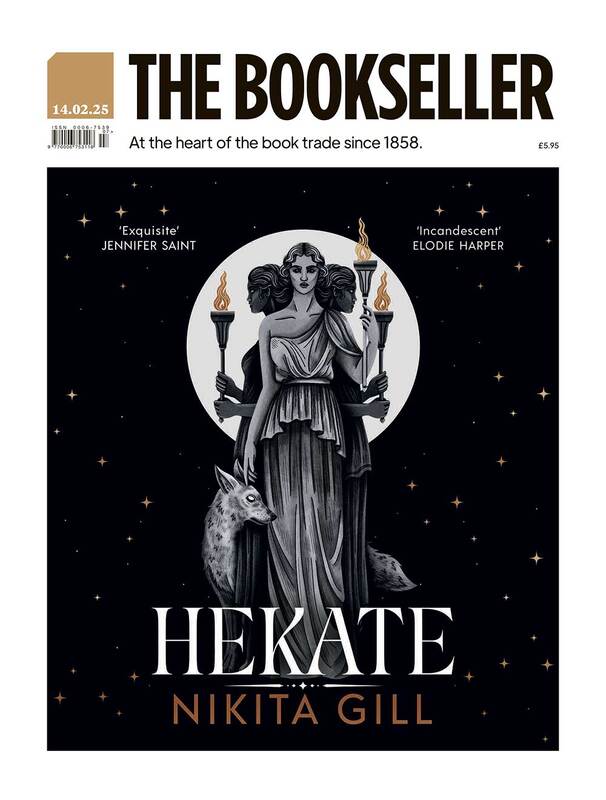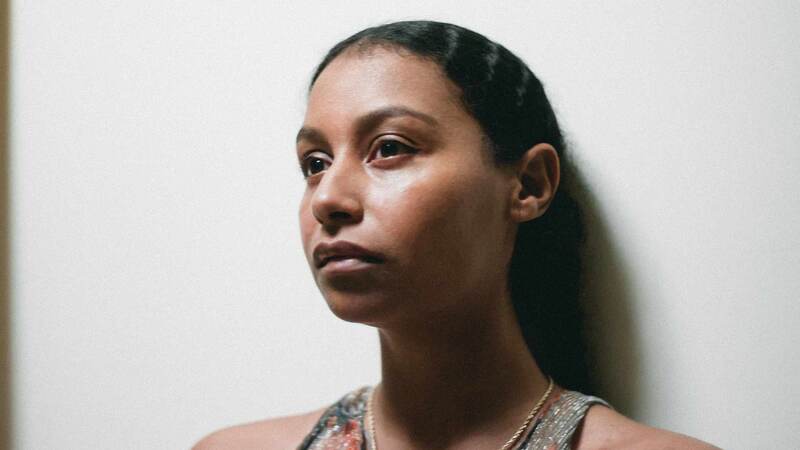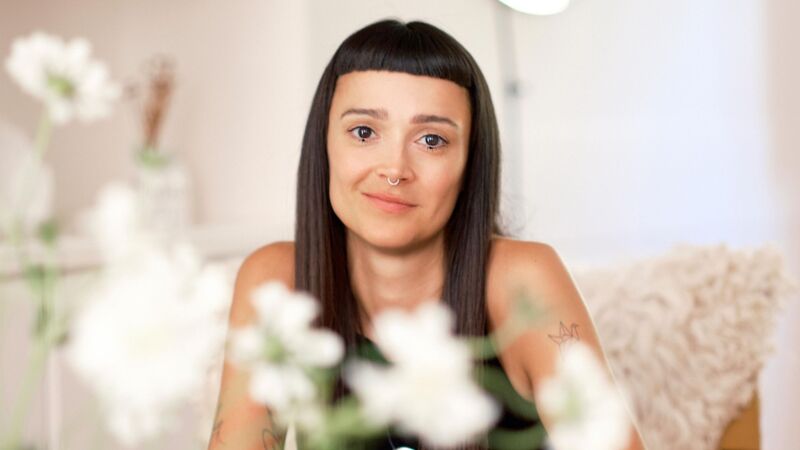You are viewing your 1 free article this month. Login to read more articles.
Furrily does it as Nicholas wins inaugural Carmelite Prize
Hachette Children’s Group (HCG) has announced the winner of the inaugural Carmelite Prize, its new award recognising excellence in children’s book illustration.
Unveiled at the end of 2015, the award gave students in Higher Education, study- ing illustration or design disciplines, the opportunity to illustrate a picture book text written specially for the award by bestselling author Cressida Cowell.
Her text, The Story of Tantrum O’Furrily, follows an adventurous young cat; the author claimed she wanted particpants to “show us something surprising, to go beyond the text I’ve given them to demonstrate how their images can influence mood and story. There are darker elements to the book that they could bring out if they choose, or they could decide to highlight the humour...they also have to bear dozens of repeat readings, so great picture books have a depth that isn’t always obvious at first.”
The winning entrant is Anglia Ruskin University student Mark Nicholas, whose style was described by the seven judges as “classically reassuring but with a contemporary characterisation and palette”. Nicholas will be offered a contract to illustrate The Story of Tantrum O’Furrily (publication date to be confirmed), and is the recipient of £1,000 in prize money.
Cowell said: “I had given the illustrators quite a challenge; The Story of Tantrum O’Furrily is not a simple text. I was enormously impressed with the skill and sophistication of Mark’s work. He illustrates with flair and imagination and he’s captured the humour and the rhythm of the story.”
The judging panel comprised Cowell; Waterstones children’s book buyer Florentyna Martin; Seven Stories programme director Alison Gwynn; picture book blogger Emma O’Donovan; HCG c.e.o. Hilary Murray Hill; HCG creative director Sophie Stericker; and Hodder Children’s Books publishing director Anne McNeil.
However, the quality of entries impressed HCG to the extent that it has also entered into publishing discussions with the runner-up, Rosie Fairholm of Leeds College of Art, who wins £500. Falmouth University student Hannah Seakins took third prize (£250), and alongside two highly commended entrants—Hollie Smith from Leeds College of Art and Tammie Doe from Plymouth University—will be given the opportunity to present their portfolios to HCG art directors for advice and feedback. Murray Hill said she was “thrilled” with the standard of submissions, adding: “The decision we made to award two contracts is testament to the quality and diversity of our entrants.”
The Bookseller spoke to illustrator Nicholas shortly after he was informed of the judges’ decision.
What drew you to entering the prize in the first place, and why did you think your approach and aesthetic would be the right one to illustrate the story?
The prospect of entering the Carmelite Prize was mouthwatering...for Cressida Cowell to be involved was truly fantastic and when I saw the text I fell in love with the story. It has everything: drama, excitement, tension, humour; it can make you a little scared; it has all those magical and timeless components that make the best children’s books last forever. I’ve read it hundreds of times and it gets better each time, and I wasn’t intending to let the opportunity pass me by.
It was a chance for me to express my artistic voice and develop a way of working that complemented the story. After a lot of experimentation with monoprinting both at university and at home, I felt that the charac- ters were really breathing life with a textured look, so I decided to pursue this [approach].
Which illustrators or artists influence you and your style—is there anyone who particularly inspires you? The images submitted bring to mind those of Ted Hughes’ The Iron Man or Patrick Ness’ A Monster Calls...
Studying on the [Anglia Ruskin Children’s Book Illustration MA] is a truly inspirational place to be. As students we get to explore a huge amount of children’s books, of which the variety of techniques and methods of storytelling is vast. I’m particularly influenced by Shaun Tan, his palette and ability to create other worlds is astounding. Other [inspirations] include Jon Klassen—I love his limited palette and technique—and you’re correct in thinking I admire the work of Jim Kay, particularly from A Monster
Calls. His work is so expressive, he creates an atmosphere and mood that transports you to the heart of the story.
One of Nicholas' 14 submitted spreads illustrating the supplied text.
How did you create the illustrations, and what were the challenges of your method?
The artwork is monoprint: I’ve developed a very personal and individual way of working in the past year, by combining traditional printmaking techniques with my model-making skills [Nicholas holds a degree in modelmaking from Bournemouth Arts Institute, and worked in the field for a number of years] using Photoshop for composition.
For this project I produced quick sketches for the storyboard until I felt I was visually echoing the narrative. I then developed the characters more and brought them to life— with [characters] Smallpaw and the Fox in particular, the main challenge was retaining the energy and vigour of my initial sketches. So I traced over the body shapes of the main characters using a lightbox and cut out their shapes. I experimented, dipping a sock into ink, and it produced a great texture and tone. I then dabbed the inky sock throughout the template, so when it was removed I was left with the shape of my character. I placed this on the lightbox and sketched some fur and the key characteristics of the characters on a separate piece of paper. Both elements were scanned into Photoshop and I overlaid them digitally. The artwork feels fresh and, I hope, creatively unique and appealing for children.
A book illustrated with traditional methods always has a special feel and that in turn adds more to the reading process.
How many illustrations did you complete, and how closely do you hope to work with Cowell to develop your submissions?
The competition brief was to complete four spreads of final artwork, with the remaining eight spreads sent in sketch form. Another aspect of the brief that I loved was the option to illustrate the endpapers, as these are integral and key to the narrative structure of Cressida’s text. I completed and sent the optional endpapers, which made my total submission 14 spreads.
The prospect of working with Cressida is exciting and inspirational; I know that I’ll learn so much and can’t wait to get started.
Your background is in model-making; what do you think that experience brings to your illustration?
Being a model-maker made me a bit of a perfectionist and efficient in time management and knowing my capabilities—especially when deadlines are looming. This has helped me to really analyse my illustrations and the processes to create them; to treat each book differently; to think: “Which way can I work to achieve my vision for a particular story?”, and then complete the artwork to a point where I feel I can do no more to improve it. I think model-making has opened my eyes to a vast range of techniques, such as collage. I feel that working with a unique blend of skills helps to raise more questions than answers, and this is always important for the creative process. Provoking interest and curiosity from a reader through the illustration style is key in children’s books.
And finally, what does winning the Carmelite Prize mean to you?
The process of illustrating The Story of Tantrum O’Furrily has been thoroughly fun and creatively productive. There’s always that hope, as an illustrator working in isolation for long days, that when your artwork is eventually seen people will love it...it appears that has been the outcome, and that’s a wonderful feeling. I’m nervous and excited about working on the book, as it sinks in that I actually will be illustrating it. I could never have imagined winning such a fantastic prize, and to collaborate with an author of such talent and stature as Cressida Cowell.
It’s more than a dream come true and I can’t wait to see it published—it’s going to be a challenge, but so much fun.


















